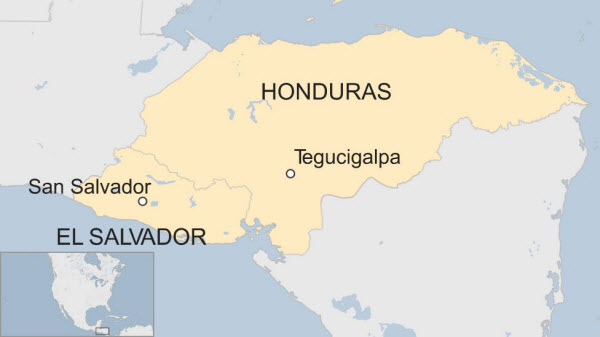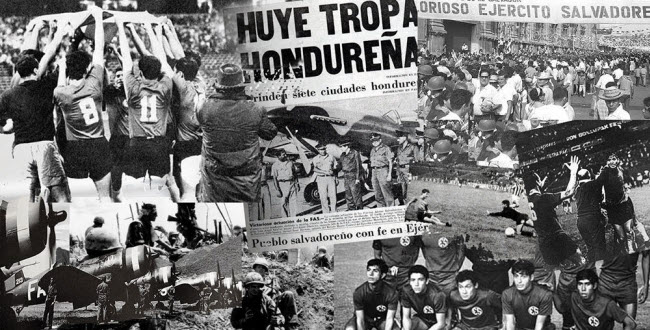Sports competitions were created as an alternative to violence and conflict among people, with the aim of providing a peaceful gathering for nations around the world. However, this noble goal was starkly contradicted by an incident that erupted into war between two countries, El Salvador and Honduras. This conflict, known globally as the “Soccer War,” was ignited by a World Cup qualifying match and lasted four days, resulting in thousands of deaths and displacements. It eventually caught the attention of international institutions, moving beyond the realm of sports organizations.
The spark was lit at the “Azteca” stadium in Mexico City on June 27, 1969, where a decisive match was held between Honduras and El Salvador for a spot in the 1970 World Cup, to be held in Mexico. Neither country had previously qualified for the World Cup, and they faced each other in a playoff after Honduras won the first leg 1-0 in Tegucigalpa. El Salvador responded by winning the second leg 3-0 in San Salvador. The teams were then set to play a neutral-ground playoff in Mexico. The match ended 2-2 after regular time, leading to extra time. In the 11th minute of extra time, Salvadoran player Mauricio Rodríguez scored the third goal for El Salvador, securing a 3-2 victory and a World Cup berth for El Salvador. However, the situation did not end there. Three weeks later, a fierce war broke out between the two nations, resulting in thousands of casualties.

The match was the catalyst, but deeper historical grievances existed between the countries. In 1969, El Salvador had a population of 3 million people and was a small nation where most land was controlled by a wealthy elite and landowners, leaving poor Salvadoran farmers with very limited land. In contrast, neighboring Honduras, which was five times larger in area and had a population of 2.3 million, had fewer landowners. This disparity led Salvadorans to migrate to Honduras in search of land and employment in American-owned fruit companies. Encouraged by Salvadoran landowners to ease the pressure on their land, approximately 300,000 Salvadorans moved to Honduras by the late 1960s, constituting around 20% of Honduras’s population. This influx caused significant discontent among Honduran farmers who were struggling for land. In response, Honduran President Oswaldo López Arellano enacted selective agrarian reform, targeting land occupied by Salvadoran immigrants rather than land owned by elites or American companies. This led to the expropriation of Salvadoran-held land and the expulsion of thousands of Salvadorans, causing further tensions between the two countries, including border disputes.
The massive return of Salvadoran migrants exerted significant pressure on the Salvadoran government, especially after landowners incited President Fidel Sánchez Hernández to consider military action against Honduras. Salvadoran media began reporting abuses against these migrants, including claims of rape, torture, and murder, intensifying animosity between the two nations. The situation reached a fever pitch with a World Cup qualifier match amidst this charged atmosphere, where winning became a national imperative for the players, as losing would bring disgrace.
On June 8, the teams met in the first leg in Honduras. The Salvadoran team’s hotel was stoned before the match, which ended with a 1-0 victory for the hosts. The loss had a profound effect on an 18-year-old Salvadoran girl named Amelia Bolaños, who took her own life, leading Salvadoran newspapers to cover her death extensively as a symbol of national grief. The entire nation mourned, and the Salvadoran team participated in her funeral, carrying her casket through the streets, with the president and his followers displaying her image during the national broadcast. The return match on June 15 saw the destruction of the Honduran team’s hotel, and the Salvadoran army transported the Honduran players to the stadium in tanks. Honduran coach Mario Griffin described the situation as if the soldiers intended to kill them, and the match, played under an atmosphere of hostility, ended with a 3-0 victory for El Salvador. The aftermath saw significant riots, with two Honduran fans killed, hundreds injured, and 150 cars destroyed.

Due to the results of the two legs, a deciding match was held on June 27, 1969, in Mexico. As preparations were underway, El Salvador severed diplomatic ties with Honduras, accusing it of failing to protect Salvadorans who had been persecuted after the second match. The Salvadoran government claimed that Honduras did nothing to prevent the killings, oppression, and mass expulsions, and refused to offer assurances of reparations. This led to heightened tensions between the two nations, with Mexican authorities deploying 1,700 police officers to prevent riots. The Salvadoran crowd chanted “Kill them… kill them” from the stands.
The final match ended with El Salvador winning 3-2 and qualifying for the World Cup, igniting the war between the two countries. On July 14, skirmishes broke out along the border, and El Salvador ordered its forces to invade Honduras, bombing key Honduran facilities, including military bases, airports, and oil platforms. Honduras retaliated with air raids and ground battles. The conflict lasted four days, and by July 18, when the Organization of American States brokered a ceasefire, approximately 3,000 people, mostly civilians, were dead, with many more displaced. International pressure led El Salvador to withdraw its troops from Honduras in August. Although the war ended, a deep wound remained between the countries, halting trade and keeping borders closed for a long time, until a peace treaty was signed in Peru in 1980. While border issues persist, they have not escalated to the level of war since.

El Salvador participated in the World Cup the following year, suffering three defeats to Mexico, Belgium, and the Soviet Union, failing to score a goal and conceding nine. After their World Cup exit, the team visited Amelia’s grave to honor her memory, which has become an annual event in the country. Mauricio Rodríguez, who scored the decisive goal in the playoff, reflects, “For me, that goal will always be a source of sporting pride, but I am certain that authorities and politicians exploited our sporting victory to glorify El Salvador. The war would have occurred regardless of that goal. We respect the Honduran team; they were not our enemies but merely our competitors.”
